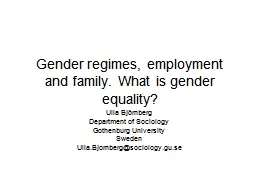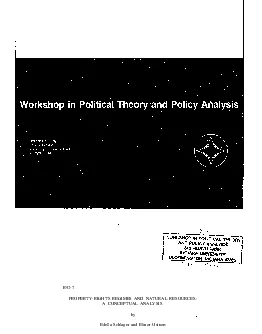PPT-Gender regimes, employment and family. What is gender equal
Author : conchita-marotz | Published Date : 2016-06-30
Ulla Björnberg Department of Sociology Gothenburg University Sweden UllaBjornbergsociologyguse Paid work and gender equality Implications for gender equality is
Presentation Embed Code
Download Presentation
Download Presentation The PPT/PDF document "Gender regimes, employment and family. W..." is the property of its rightful owner. Permission is granted to download and print the materials on this website for personal, non-commercial use only, and to display it on your personal computer provided you do not modify the materials and that you retain all copyright notices contained in the materials. By downloading content from our website, you accept the terms of this agreement.
Gender regimes, employment and family. What is gender equal: Transcript
Download Rules Of Document
"Gender regimes, employment and family. What is gender equal"The content belongs to its owner. You may download and print it for personal use, without modification, and keep all copyright notices. By downloading, you agree to these terms.
Related Documents














